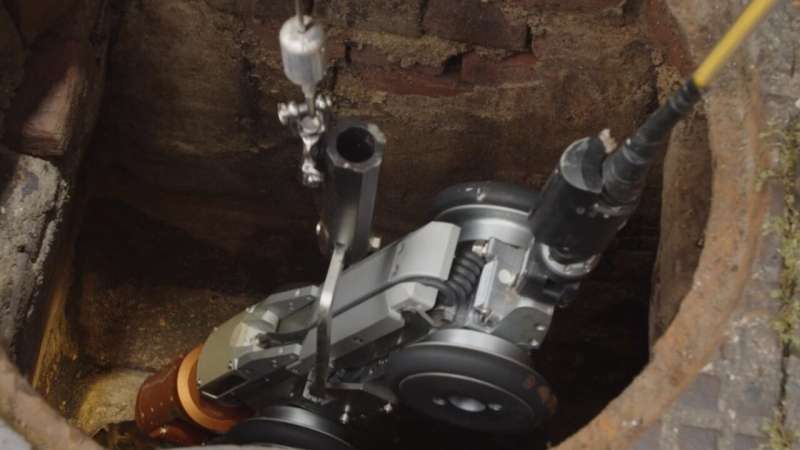This article has been reviewed according to Science X's editorial process and policies. Editors have highlighted the following attributes while ensuring the content's credibility:
fact-checked
trusted source
proofread
Algorithms descend into sewers to improve inspections

They never cross our minds until they become damaged and then they're a huge problem: our sewers. Their maintenance could be much faster and more accurate, Ph.D. candidate Dirk Meijer has discovered. Algorithms are also proving to be a godsend deep underground.
Sewer inspections are usually done by specialized companies. A small electric car (P.I.G.) on which a camera is mounted is sent into the sewer. An inspector then assesses whether cracks, leaks or other problems can be seen. And that, according to Meijer, is where things often go wrong. "If you show two inspectors the same sewer on different days, they will find different things. Companies are often paid by the hour or kilometer and that can get in the way of accuracy."
Individual assessment
A second problem is the way reporting is currently done. The severity of damage to sewer pipes is now classified from 1 to 5, with the number 5 given to the most severe damage. But in reality, those numbers are used to determine whether or not a pipe should be replaced, says Meijer. "If a slightly damaged pipe poses a risk to groundwater, then an inspector will write down 5 because that pipe needs to be replaced quickly. But that's an individual assessment."
And it shouldn't be. Automation should make inspections more uniform and with a smaller margin of error. Using machine learning, inspection reports and images of about a thousand kilometers of sewer pipes, Meijer worked on algorithms that can help identify problems. "The algorithm filters the inspection images for weak spots in the sewer system and then it's up to an inspector to review the selected images."
Shadow or crack?
That check by an inspector will remain necessary for now because even the trained computer makes mistakes. "We know our model contains false observations because we have fed it with the reports by inspectors who make human errors. Take, for example, a shadow in the image of a sewer pipe that is mistaken for a crack. To get the algorithm to inspect better than humans, more research is needed. But the algorithm can already make inspections less time-consuming."
Meijer hopes that companies will also apply his research because a considerable challenge awaits the Netherlands. "Concrete sewage pipes have an average life of about 60 to 80 years, which means that most sewers in the Netherlands are due for replacement. There is going to be a real boom in inspections and they could be done a lot more efficiently."

















